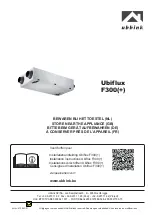
Haklift Oy
Asessorinkatu 3-7
20780 Kaarina, Finland
Tel. +358 2 511 5511
www.haklift.com
Lifting Solutions Group
Axel Johnson International
3. OPERATION
Before using the permanent magnetic lifter, please also read the safety instructions (section 5).
3.1 Before operation make sure that the surface of the workpiece is clean. Dirt, such as rust or burr must be
removed. The contact surfaces must be even and free of holes and cracks. The magnetic lifter's contact
surface must also be clean and intact. The centerline of the lifter should overlap with the centerline of the
workpiece. The lifter should be attached as close to the center of gravity of the load as possible in order to
keep the load level.
Place the magnetic lifter on the surface of the workpiece to be lifted (the contact surface
of the lifter must be in full contact with the object) and turn the handle from release position (OFF) to hold
position (ON) until the inner slide key passes the stop pin and the lifter is attached. Make sure that the handle's
safety lock has automatically locked and start lifting.
Note!
As the length or width of a load increases, the load ceases to remain flat when lifted to the air and the
edges begin to droop. Drooping of the load can create an air gap between the load and the magnet. This
peeling effect reduces the lifting capacity of the magnet significantly. For plate lifting where drooping occurs,
rectangular shaped magnets must be positioned so that the length of the magnet is parallel to the width of the
load.
3.2 During lifting and handling operation overloading is prohibited. Never allow anybody to be even for a brief
moment underneath the suspended load. Never go underneath the load and also ensure that all parts of the
body are clear of the suspended workpiece. The temperature of objects to be lifted and of the operating
environment must be between -40 and +80 °C. Strong vibrations or shocks are not allowed. Make sure the
load is not going to swing or collide with anything during operation. Only one object at a time can be lifted by
the lifter.
3.3 When handling a cylindrical object keep the workpiece in contact with the lifter’s V-slot lines. The capacity
for cylindrical iron workpiece is generally only 30 % of the rated capacity for plate.
3.4 After the lifting or handling operation is finished and the load is safely in place on a stable surface, release
the handle's safety lock to disengage the slide key from the stop pin by pressing the button at the end of the
handle and turn the handle from hold position (ON) to release position (OFF) so that the load is released. The
lifter is now in free mode and can be taken away from the workpiece.




































